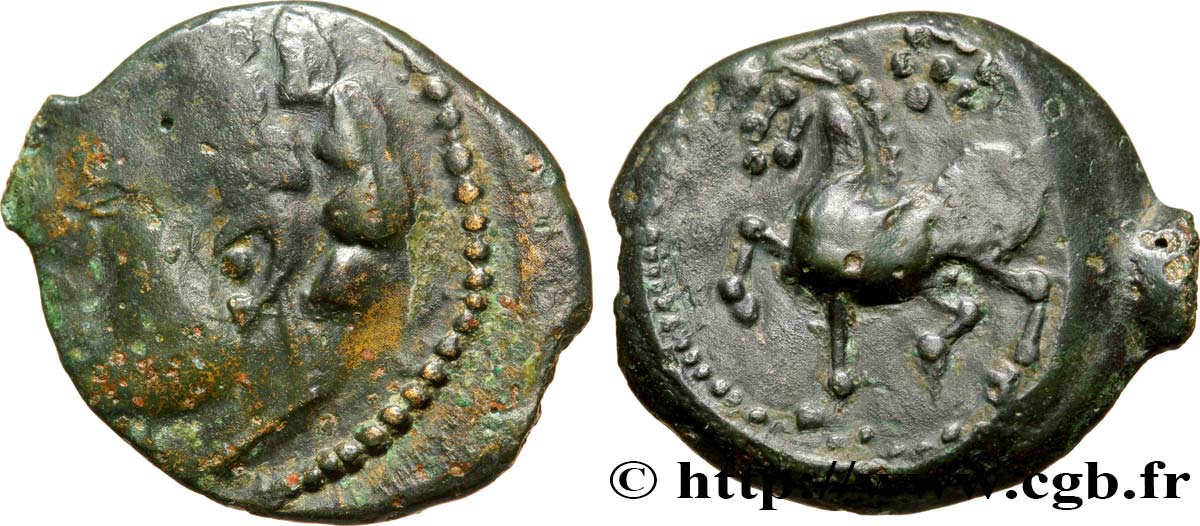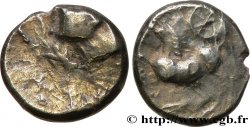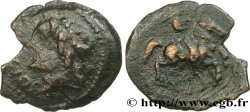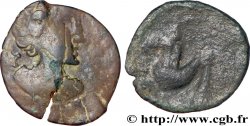E-auction 84-42492 - bga_239166 - GALLIA - ARVERNI (Area of Clermont-Ferrand) Bronze ROAC, DT. 3716 et 2613
You must signin and be an approved bidder to bid, LOGIN TO BID. Accounts are subject to approval and the approval process takes place within 48 hours. Do not wait until the day a sale closes to register. Clicking on « bid » constitutes acceptance of the terms of use of cgb.fr private e-auctions.
Bids must be placed in whole Euro amounts only. The sale will start closing at the time stated on the item description; any bids received at the site after the closing time will not be executed. Transmission times may vary and bids could be rejected if you wait until the last second. For further information ckeck the E-auctions F.A.Q.
NO BUYER'S FEE.
NO BUYER'S FEE.
| Estimate : | 160 € |
| Price : | 48 € |
| Maximum bid : | 58 € |
| End of the sale : | 24 November 2014 15:06:30 |
| bidders : | 10 bidders |
Type : Bronze ROAC, DT. 3716 et 2613
Date: Ier siècle avant J.-C.
Metal : bronze
Diameter : 16 mm
Orientation dies : 11 h.
Weight : 2,89 g.
Rarity : R2
Coments on the condition:
Bronze avec un droit de frappe molle et décentrée, mais avec un beau revers complet. Patine sombre et brillante, sur un métal sain
Predigree :
Cet exemplaire provient de la collection M. G
Obverse
Obverse legend : ANÉPIGRAPHE.
Obverse description : Tête masculine à gauche ; un annelet devant le front, un autre sous le menton et un autre derrière la nuque.
Reverse
Reverse legend : ANÉPIGRAPHE.
Reverse description : Cheval au pas à gauche ; au-dessus, annelet perlé pointé ; grènetis.
Commentary
Ce bronze est rare et sous documenté ; deux monnaies du Nouvel Atlas y correspondent, l'une dans le tome II et l'autre dans le tome III (DT. 2613 et 3716), ce qui montre nos incertitudes quant à ce bronze. L’exemplaire proposé ici est anépigraphe, comme presque tous les exemplaires connus. Les auteurs du Nouvel Atlas signalent les monnaies BN. 4373-75 et 4380-81, ainsi que le n° 425 de MONNAIES XV.
Très beau revers avec un cheval en position de parade ! Contrairement l’exemplaire précédent, ce bronze n’a pas d’annelet derrière la nuque au droit, ni entre les jambes du cheval au revers.
Très beau revers avec un cheval en position de parade ! Contrairement l’exemplaire précédent, ce bronze n’a pas d’annelet derrière la nuque au droit, ni entre les jambes du cheval au revers.








 Report a mistake
Report a mistake Print the page
Print the page Share my selection
Share my selection Ask a question
Ask a question Consign / sell
Consign / sell
 Full data
Full data









